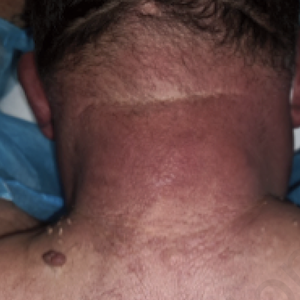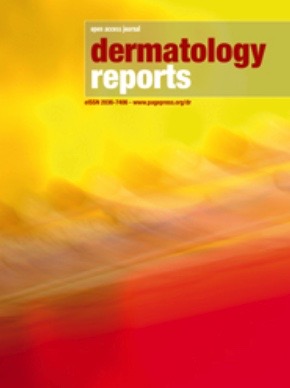Scleredema diabeticorum

All claims expressed in this article are solely those of the authors and do not necessarily represent those of their affiliated organizations, or those of the publisher, the editors and the reviewers. Any product that may be evaluated in this article or claim that may be made by its manufacturer is not guaranteed or endorsed by the publisher.
Authors
Scleredema of Buschke is a rare connective tissue disease with a poorly understood pathogenesis. Three types of scleredema have been distinguished according to its association with preceding or underlying conditions. Type 1 is usually secondary to a febrile infection, type 2 is mostly associated with paraproteinemia and type 3, usually named scleredema diabeticorum, has a strict association with Diabetes mellitus. A diffuse, non-pitting swelling and induration of the skin define this disease. The skin histology is characterized by a normal or slightly thinned epidermis, and the dermis containing a decreased number of elastic fibers and thick large swollen collagen bundles separated by mucopolysaccharide deposits in the deep reticular dermis. In this report we present a 58-year-old man with scleredema diabeticorum controlled with a topical steroid cream and an optimization of glycemic control. We reviewed clinical, histopathological characteristics and the various possible treatments.
How to Cite

This work is licensed under a Creative Commons Attribution-NonCommercial 4.0 International License.








